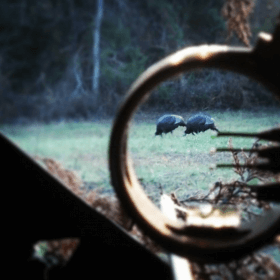- Home
- About
- Blog
- For Parents
-
Corners
- Allison’s Corner
- Amber’s Category
- Andrea’s Corner
- Ashley’s Corner
- Brandi Jo’s Corner
- Brittany’s Corner
- Brooke’s Corner
- Catrina’s Corner
- Conservation
- Desiree’s Corner
- Emily’s Corner
- Erica’s Corner
- Erin’s Corner
- Heather’s Corner
- Ivory’s Corner
- Jeana’s Corner
- Katie’s Corner
- Kelly’s Corner
- Kelsey’s Corner
- Kendra’s Corner
- Liberty’s Corner
- Lisa’s Corner
- Meagan’s Corner
- Melissa’s Corner
- Mimi’s Corner
- Morgan’s Corner
- Nicole’s Corner
- Sarah’s Corner
- Savannah’s Corner
- Shannon’s Blog
- Sharon’s Corner
- Sherri’s Corner
- Tara’s Corner
- Contact
- Guest Post

Talking Turkey
Talking Turkey
Turkey hunting is one of the most exciting and challenging hunts the woods have to offer. A new hunter can be quite successful hunting turkeys because it is inexpensive and doesn’t require much experience. In Missouri, Spring hunting season takes place during turkey mating season and male turkeys are vulnerable and vocal. Gobblers can be called into gun range with calls that imitate the sound of hens. Push button or box calls are relatively easy to use and are popular with new hunters. With practice and the right calls a gobbler can be located and called into shooting range. Decoys are also a great tool to bring a turkey closer. A variety of hen and gobbler decoys are available in major retailers from companies like Primos, Avian-X, and Flextone.
Distinguishing the sex of a turkey is simple if you know what characteristics to look for. A mature male turkey is known as a tom or gobbler. Gobblers are black in color, with a large body and long beard. Their spurs are usually ½ inch or longer. Juvenile gobblers are called jakes and like a gobbler they have a red head and dark body. Jakes are smaller in size with a beard shorter than 6 inches long and spurs less than a ½ inch long. Tail feathers are another way to determine the difference between a gobbler and a jake. When a gobbler is in full strut his tail feathers are the same length. The center tail feathers of a jake are longer than the rest of the feathers in the tail, making him look uneven while in a strut. The female turkey is a hen and can sometimes have a small beard. A hen is smaller in size and has a brown or gray tone to her feathers. The ash color and blue-gray head make it easy for a hen to blend into her surroundings.
The number one priority while hunting should always be safety. If you are a new hunter or mentoring a youth hunter keep the basic safety rules in mind. Turkeys have great eyesight; it is important that a hunter is camouflaged and avoids any sudden movements. For safety and protection from other hunters sit against a tree when hunting from the ground. Always identify the turkey before shooting; do not shoot at movement or sound. Never aim a gun until the turkey can be seen clearly and the sex of the bird can be determined. Carry decoys in an orange bag and never walk with them in your hand. Another hunter could mistake a moving decoy as a turkey and shoot. If another hunter approaches you while hunting yell STOP! Do not move or whistle to gain attention.
Hearing a turkey gobble from the roost or calling one into a decoy can get a hunter’s heart pounding. If you are new to turkey hunting do some research and start scouting. It is never too early to start preparing for Spring turkey season, grab some calls and practice.
References:
2014 Spring Turkey Hunting Regulations and Information
Missouri Department of Conservation

Leave a Reply